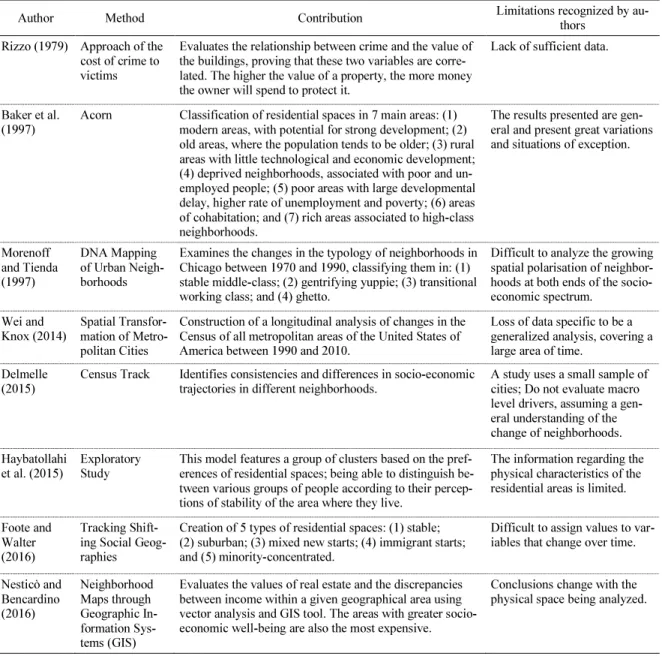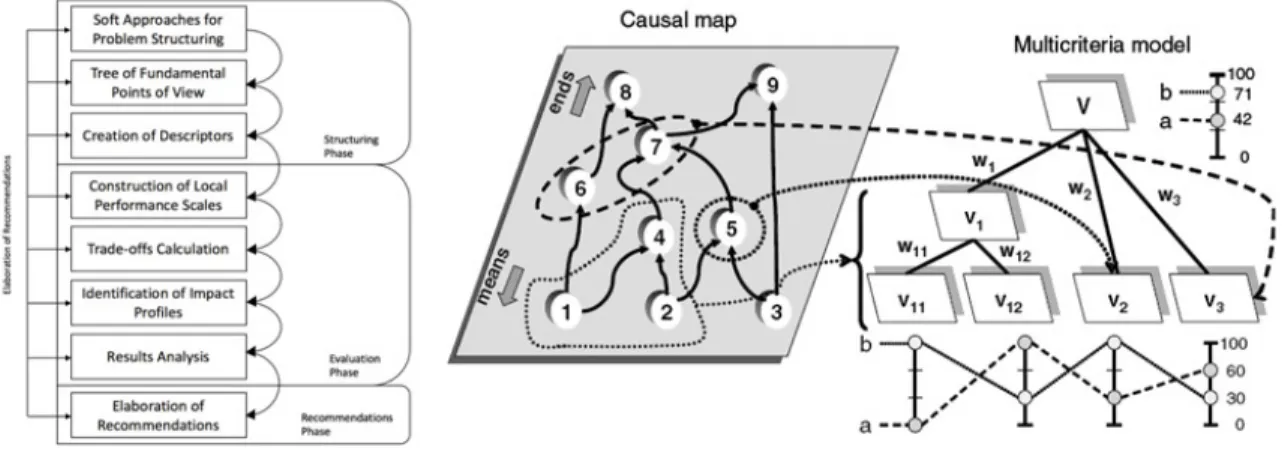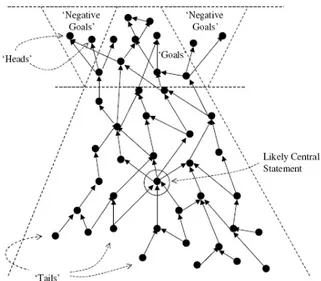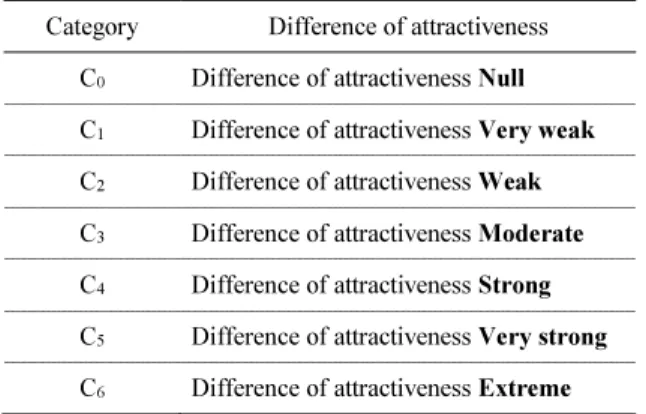eISSN 2029-7963/eISBN 978-609-476-012-9 https://doi.org/10.3846/cbme.2017.020
© 2017 S. C. R. Marques, F. A. F. Ferreira, I. Meidutė-Kavaliauskienė. Published by VGTU Press. This is an open-access article distributed under the terms of the Creative Commons Attribution (CC BY 4.0) License, which permits unrestricted use,
Classifying Residential Real Estate Based on Their Exposure to Crime:
a Research Agenda
Sara C. R. Marques
1, Fernando A. F. Ferreira
2, 3, Ieva Meidutė-Kavaliauskienė
4, 51
ISCTE Business School, University Institute of Lisbon, Portugal
2ISCTE Business School, BRU-IUL, University Institute of Lisbon, Portugal
3Fogelman College of Business and Economics, University of Memphis, USA
4
Vilnius Gediminas Technical University, Lithuania
5BRU-IUL, University Institute of Lisbon, Portugal
E-mails:
1scrmarques.17@gmail.com;
2, 3fernando.alberto.ferreira@iscte.pt (corresponding author);
4, 5ieva.meidutekavaliauskiene@vgtu.lt
Received 23 January 2017; accepted April 2017
Abstract. Criminality and sense of security in residential areas are always present in the mind of citizens, and directly affect the work of police authorities, real estate agents and society at large. This study proposes the development of a multiple criteria model for the classification of residential areas based on their exposure to crime. By combining cogni-tive mapping with the Measuring Attraccogni-tiveness by a Categorical Based Evaluation Technique (MACBETH), we also aim to increase transparency in the classification process of residential real estate, allowing improvement initiatives to be applied and crime rates to be reduced. The major difference between our proposal and the extant literature is the fact that the information collected from criminal, urbanism and real estate experts, who deal with crime adversities on a daily basis, will be analyzed and discussed during presential group meetings, allowing realism to be incorporated into the evaluation mechanism. The current proposal is a research agenda, and results will not yet be presented.
Keywords: Classification of Residential Areas; Crime Exposure; MCDA; Cognitive Mapping; MACBETH. JEL Classification: C69, M20, R11.
Conference topic: Modern Business Management Problems and Perspectives.
Introduction
The choice of a residential area is based on the trust and belief that the chosen area ensures security for its residents.
Crime can be a source of economic and social fragility, putting public welfare at risk. Considering that this phenomenon
is present in each person’s mind, it can be understood in different ways, depending on the perceptions and past
expe-riences of each individual. As pointed out by Canas et al. (2015), this allows the classification of residential spaces to
be considered a “complex decision problem”, which needs to be analyzed in a structured way.
Classification models for residential real estate exist and are useful because they provide support to the decision
processes of municipalities, police forces, real estate agents and citizens, allowing for a better understanding of social
preferences and urban flows. It is worth noting, however, that the use of classification models is not without limitations,
namely if one considers that subjectivity is omnipresent in the decision making framework (DeTombe 2002; Bana e
Costa, Oliveira 2002; Ferreira 2016). In light of this reasoning, we propose a constructivist approach to the problem,
based on the integrated use of cognitive mapping techniques with the Measuring Attractiveness by Categorical Based
Evaluation Technique (MACBETH). Specifically, cognitive mapping allows evaluation criteria and their relationships
to be revealed, while MACBETH facilitates the calculation of the respective trade-offs. Although both approaches
have been previous applied and reported in the literature (see, for instance, Ferreira et al. 2011; Canas et al. 2015;
Ferreira et al. 2015; Filipe et al. 2015; Oliveira et al. 2017), we have found no documented evidence reporting their
combined use in the classification context of residential areas according to their exposure to crime.
The remainder of this paper is structured as follows. The next section presents the literature review. The ensuing
section presents the methodological background, highlighting the advantages of the integrated use of cognitive
map-ping with MACBETH. The last section concludes the paper. It is worth underlying that the current proposal is a
re-search agenda, and results will not yet be presented.
Related Work
It is well known that experiencing potentially dangerous situations is a source of emotional stress and increased feeling
of insecurity. Several studies have shown that an increase in crime levels in residential areas is usually associated with
an increased risk of experiencing psychological stress (e.g. Justus, Kassouf 2013; Janssen 2014). Crime is also related
to health at a physical level (Kerr et al. 2015), with young people being the most vulnerable. It is also through the study
of juvenile practices that it is possible to understand that it is the combination of individual, family and social factors
(e.g. racial issues and unfavorable economic conditions) that dictate, in part, the levels of crime in a residential area
(Hartinger-Saunders et al. 2012; Çaya 2014).
According to Okunola and Amole (2012), Hur and Nasar (2014), Ferreira (2016) and Foster et al. (2016), among
others, a more technical form of crime control in residential areas results from the existence of urban planning, which
should allow urban spaces to be effectively designed as safe environments. Although the selection of a particular
residential area depends on the buyer’s preferences, needs and way of living (Haybatollahi et al. 2015; Komeily,
Srini-vasan 2016), which introduces subjectivity in the decision-making framework, it is worth noting that classification
models for residential real estate are useful because they can provide decision support to municipalities, police forces
and economic agents alike, encouraging viable solutions to improve residential spaces, reduce crime levels and
re-qualify residential areas (Steenberg et al. 2015; Ciampalini et al. 2016). Following this, Table 1 presents some of the
Table 1. Classification models of residential real estate: contributions and limitations (Source: composed by the authors)
Author Method Contribution Limitations recognized by au-thors
Rizzo (1979) Approach of the cost of crime to victims
Evaluates the relationship between crime and the value of the buildings, proving that these two variables are corre-lated. The higher the value of a property, the more money the owner will spend to protect it.
Lack of sufficient data.
Baker et al.
(1997) Acorn Classification of residential spaces in 7 main areas: (1) modern areas, with potential for strong development; (2) old areas, where the population tends to be older; (3) rural areas with little technological and economic development; (4) deprived neighborhoods, associated with poor and un-employed people; (5) poor areas with large developmental delay, higher rate of unemployment and poverty; (6) areas of cohabitation; and (7) rich areas associated to high-class neighborhoods.
The results presented are gen-eral and present great variations and situations of exception.
Morenoff and Tienda (1997) DNA Mapping of Urban Neigh-borhoods
Examines the changes in the typology of neighborhoods in Chicago between 1970 and 1990, classifying them in: (1) stable middle-class; (2) gentrifying yuppie; (3) transitional working class; and (4) ghetto.
Difficult to analyze the growing spatial polarisation of neighbor-hoods at both ends of the socio-economic spectrum.
Wei and
Knox (2014) Spatial Transfor-mation of Metro-politan Cities
Construction of a longitudinal analysis of changes in the Census of all metropolitan areas of the United States of America between 1990 and 2010.
Loss of data specific to be a generalized analysis, covering a large area of time.
Delmelle
(2015) Census Track Identifies consistencies and differences in socio-economic trajectories in different neighborhoods. A study uses a small sample of cities; Do not evaluate macro level drivers, assuming a gen-eral understanding of the change of neighborhoods. Haybatollahi
et al. (2015) Exploratory Study This model features a group of clusters based on the pref-erences of residential spaces; being able to distinguish be-tween various groups of people according to their percep-tions of stability of the area where they live.
The information regarding the physical characteristics of the residential areas is limited. Foote and
Walter (2016)
Tracking Shift-ing Social Geog-raphies
Creation of 5 types of residential spaces: (1) stable; (2) suburban; (3) mixed new starts; (4) immigrant starts; and (5) minority-concentrated.
Difficult to assign values to var-iables that change over time. Nesticò and
existing contributions in the context under analysis, where it can be seen that part of the studies presented combine
quantitative and qualitative variables in a single approach, but none of them is without limitations. In fact, it is possible
to identify some general limitations that can be grouped into two major categories, namely: (1) the way evaluation
criteria are defined; and (2) how the weights of those same criteria are calculated.
Following this, a constructivist approach will be adopted, combining cognitive mapping techniques with the
MACBETH approach. Cognitive mapping allows evaluation criteria and their relationships to be revealed (Eden,
Ackermann 2004; Ferreira, Jalali 2015), while MACBETH is known for facilitating the calculation of trade-offs (Bana
e Costa et al. 2012). The next section presents both approaches.
Methodological Background
As defended by Ferreira et al. (2011), “MCDA takes into account that decision-making processes are complex and
composed of several actors with different perceptions and value systems, stressing that this approach highlights the
limits of objectivity, and considers the possibility that some problems may not have an optimal solution” (also see
Belton, Stewart 2002; Santos et al. 2002, 2008; Cinelli et al. 2014; Anchul et al. 2016; Corazza et al. 2016). In this
sense, our study will be structured in three phases: (1) structuring phase, where cognitive mapping techniques will be
applied to identify the evaluation criteria; (2) evaluation phase, in which the MACBETH technique will be used to
calculate the trade-offs of the model and; (3) recommendations phase, where the main advantages and limitations of
our proposal will be discussed. Figure 1 presents the sequence of steps to be followed.
Fig. 1. Sequence of methodological procedures to be followed (Source: Ensslin et al. (2000, adap.) and Montibeller and Belton (2006, adap.))
In practice, the operational part of our study will start with the development of a collective cognitive map, which
will provide us with the necessary information to construct a tree of Fundamental Points of View (FPVs) (Bana e Costa
et al. 2012). This value tree will be operationalized, in a later stage of the structuring process, through the construction
of descriptors (i.e. set of ordered performance levels) (see Filipe et al. 2015; Gonçalves et al. 2016). Next, the
MAC-BETH approach will be applied, allowing the trade-offs between FPVs to be calculated, and local performance scales
to be obtained for each descriptor.
Cognitive Mapping
In broad terms, cognitive maps are mental representations that can be used to: (1) promote discussion and provide
group support; (2) reduce the number of omitted criteria in the decision making framework; and (3) guide strategic
planning (cf. Eden, Ackermann, 2004; Canas et al. 2015; Ferreira et al. 2015; Komarov, Avdeeva 2015; Gonçalves
et al. 2016). As pointed out by Gavrilova et al. (2013), “maps as visual tools facilitate the representation and
commu-nication, support the identification and the interpretation of information, facilitate consultation and codification, and
stimulate mental associations”. Figure 2 presents the functional logic of this type of maps.
Fig. 2. Functional logic of cognitive mapping (Source: Eden 2004)
As can be seen in Figure 2, the dots stand for variables/concepts and the arrows represent the cause-and-effect
rela-tionships between them. This functional logic can be easily noticed in the example provided in Figure 3.
Fig. 3. Example of a cognitive map (Source: Eden 2004)
As discussed in the literature (cf. Eden, Ackermann 2004; Ferreira, Jalali 2015; Filipe et al. 2015), the construction of
a cognitive map is not the final step of the structuring phase, but can provide important information for a transparent
definition/selection of the evaluation criteria. Following this, cognitive mapping seems to hold great potential in the
context of this study – i.e. classification of residential areas based on their exposure to crime –, namely because most
of the evaluation dimensions are intangible.
The MACBETH Approach
The mathematical foundations of MACBETH can be found in Bana e Costa et al. (2012). However, in practical
terms, the technique aims to understand how much a choice alternative is preferred over another, and measure the
difference of attractiveness between both. For that purpose, the method requires pairwise qualitative judgments on the
part of the decision makers, using the semantic categories of difference of attractiveness presented in Table 2.
Table 2. Semantic categories of difference of attractiveness (Source: Bana e Costa et al. 1994, adap.) Category Difference of attractiveness
C0 Difference of attractiveness Null
C1 Difference of attractiveness Very weak
C2 Difference of attractiveness Weak
C3 Difference of attractiveness Moderate
C4 Difference of attractiveness Strong
C5 Difference of attractiveness Very strong
C6 Difference of attractiveness Extreme
If the judgments provided by the decision makers respect the ordinal and semantic conditions required by the
method (see Bana e Costa et al. 2012), then it is possible to apply linear programming and generate cardinal scales that
are then presented to the decision makers for discussion and validation (see also, Filipe et al. 2015). This allows the
trade-offs between criteria to be obtained.
As discussed in the literature (Bana e Costa et al. 2012; Filipe et al. 2015; Oliveira et al. 2017), the MACBETH
technique presents several benefits. In particular, as pointed out by Ferreira et al. (2014), the method is simple, easy to
understand, able to consider qualitative and quantitative evaluation criteria, and solidly supported on mathematics.
Thus, considerable scope exists to explore its integrated applicability with cognitive mapping in the classification
con-text of residential areas according to their exposure to crime. This is precisely what we aim to do...
Conclusions
The development and desirable implementation of residential real estate classification models are useful activities
insofar as they allow local authorities, police, real estate agents and individuals to take more informed decisions and
present viable solutions for real estate improvement, reducing crime levels and increasing property values.
In practice, the classification of residential real estate is a complex and time-consuming process, largely because
it is influenced by the existence of different/intangible variables and by the fact that residential frontiers are sometimes
difficult to define (Steenberg et al. 2015). The existing models are not exempt of methodological limitations, which
can be grouped into two main categories, namely: (1) the way evaluation criteria are defined; and (2) how the weights
of those same criteria are calculated. To address these issues, a constructivist approach will be adopted, through the
combination of cognitive mapping techniques with the MACBETH approach.
The construction of a new classification system for residential spaces according to their exposure to crime will
involve different decision makers (e.g. criminal, urbanism and real estate experts, who deal with crime adversities on
a daily basis). We anticipate difficulties in getting them together for the group meetings. However, we believe that the
combine use of cognitive mapping techniques with the MACBETH approach will be a step forward in the correct
classification of residential real estate.
References
Anchul, J.; Kim, S.; Kim, M.; Jung, K. 2016. Development of optimization model for river dredging management using MCDA, Engineering 154: 369–373.
Baker, K.; Bermingham, J.; McDonald, C. 1997. The utility to market research of the classification of residential neighbourhoods, Journal of the Market Research Society 39(1): 53–66.
Bana e Costa, C.; De Corte, J.; Vansnick, J. 2012. MACBETH, International Journal of Information Technology and Decision Making 11(2): 359–387. https://doi.org/10.1142/S0219622012400068
Bana e Costa, C.; Oliveira, R. 2002. Assigning priorities for maintenance, repair and refurbishment in managing the municipal housing stock, European Journal of Operational Research 138(2): 380–391.
https://doi.org/10.1016/S0377-2217(01)00253-3
Bana e Costa, C.; Vansnick, J. 1994. MACBETH: an interactive path toward the construction of cardinal value functions, Interna-tional Transactions in OperaInterna-tional Research 1(4): 489–500. https://doi.org/10.1016/0969-6016(94)90010-8
Belton V.; Stewart, T. 2002. Multiple criteria decision analysis: an integrated approach. Dordrecht: Kluwer Academic Publishers. https://doi.org/10.1007/978-1-4615-1495-4
Canas, S.; Ferreira, F.; Meidutė-Kavaliauskienė, I. 2015. Setting bridge in residential real estate: a methodological proposal using multiple criteria decision analysis, International Journal of Strategic Property Management 19(4): 368–380.
https://doi.org/10.3846/1648715X.2015.1093562
Çaya, S. 2014. Violence in rural regions: the case of modern Turkey, Procedia – Social and Behavioral Sciences 114: 721–726. https://doi.org/10.1016/j.sbspro.2013.12.774
Ciampalini, A.; Raspini, F.; Lagomarsino, D.; Catani, F.; Casagli, N. 2016. Landslide susceptibility map refinement using PSInSAR data, Remote Sensing of Environment 184: 302–315. https://doi.org/10.1016/j.rse.2016.07.018
Cinelli, M.; Coles, S.; Kirwan, K. 2014. Analysis of the potentials of multicriteria decision analysis methods to conduct sustaina-bility assessment, Ecological Indicators 46: 138–148. https://doi.org/10.1016/j.ecolind.2014.06.011
Corazza, M.; Funari, S.; Gusso, R. 2016. Creditworthiness evaluation of Italian SMEs at the beginning of the 2007–2008 crisis: an MCDA approach, North American Journal of Economics and Finance 38: 1–26. https://doi.org/10.1016/j.najef.2016.05.008 Delmelle, E. 2015. Five decades of neighborhood classifications and their transitions: a comparison of four US cities, 1970–2010,
Applied Geography 57: 1–11. https://doi.org/10.1016/j.apgeog.2014.12.002
DeTombe, D. 2002. Complex societal problems in operational research, European Journal of Operational Research 140(2): 232– 240. https://doi.org/10.1016/S0377-2217(02)00066-8
Eden, C. 2004. Analyzing cognitive maps to help structure issues or problems, European Journal of Operational Research 159(3): 673–686. https://doi.org/10.1016/S0377-2217(03)00431-4
Eden, C.; Ackermann, F. 2004. Cognitive mapping expert views for policy analysis in the public sector, European Journal of Op-erational Research 152(3): 615–630. https://doi.org/10.1016/S0377-2217(03)00061-4
Ensslin, L.; Dutra, A.; Ensslin, S. 2000. MCDA: a constructivist approach to the management of human resources at a governmental agency, International Transactions in Operational Research 7(1): 79–100.
https://doi.org/10.1111/j.1475-3995.2000.tb00186.x
Ferreira, F. 2016. Are you pleased with your neighborhood? A fuzzy cognitive mapping-based approach for measuring residential neighborhood satisfaction in urban communities, International Journal of Strategic Property Management 20(2): 130–141. https://doi.org/10.3846/1648715X.2015.1121169
Ferreira, F.; Santos, S.; Marques, C.; Ferreira, J. 2014. Assessing credit risk of mortgage lending using MACBETH: a methodolog-ical framework, Management Decision 52(2): 182–206. https://doi.org/10.1108/MD-01-2013-0021
Ferreira, F.; Jalali, M. 2015. Identifying key determinants of housing sales and time-on-the-market (TOM) using fuzzy cognitive mapping, International Journal of Strategic Property Management 19(3): 235–244.
https://doi.org/10.3846/1648715X.2015.1052587
Ferreira, F.; Marques, C.; Bento, P.; Ferreira, J.; Jalali, M. 2015. Operationalizing and measuring entrepreneurial individual orien-tation using cognitive mapping and MCDA techniques, Journal of Business Research 68(12): 2691–2702.
https://doi.org/10.1016/j.jbusres.2015.04.002
Ferreira, F.; Santos, S.; Rodrigues, P. 2011. Adding value to bank branch performance evaluation using cognitive maps and MCDA: a case study, Journal of the Operational Research Society 62(7): 1320–1333. https://doi.org/10.1057/jors.2010.111 Filipe, M.; Ferreira, F.; Santos, S. 2015. A multiple criteria information system for pedagogical evaluation and professional
devel-opment of teachers, Journal of the Operational Research Society 66(11): 1769–1782. https://doi.org/10.1057/jors.2014.129 Foote, N.; Walter, R. 2016. Neighborhood and socioeconomic change in emerging megapolitan nodes: tracking shifting social
geographies in three rapidly growing United States metropolitan areas, 1980–2010, Urban Geography (August): 1–28. https://doi.org/10.1080/02723638.2016.1217637
Foster, S.; Hooper, P.; Knuiman, M.; Bull, F.; Giles-Corti, B. 2016. Are liveable neighbourhoods safer neighbourhoods? Testing the rhetoric on new urbanism and safety from crime in Perth, Western Australia, Social Science & Medicine 164: 150–157. https://doi.org/10.1016/j.socscimed.2015.04.013
Gavrilova, T.; Carlucci, D.; Schiuma, G. 2013. Art of visual thinking is smart business education, in Proceedings of the 8th
Interna-tional Forum on Knowledge Asset Dynamics (IFKAD-2013), Zagreb, Croatia, 1754–1761.
Gonçalves, T.; Ferreira, F.; Jalali, M.; Meidutė-Kavaliauskienė, I. 2016. An idiosyncratic decision support system for credit risk analysis of small and medium-sized enterprises, Technological and Economic Development of Economy 22(4): 598–616. Hartinger-Saunders, R.; Rine, C.; Nochajski, T.; Wieczorek, W. 2012. Neighborhood crime and perception of safety the predictors
of victimization and offending among youth: the call for macro-level prevention and intervention models, Children and Youth Services Review 34(9): 1966–1973. https://doi.org/10.1016/j.childyouth.2012.05.020
Haybatollahi, M.; Czepkiewicz, M.; Laatikainen, T.; Kyttä, M. 2015. Neighborhood preferences, active travel behaviour, and built environment: an exploratory study, Transportation Research Part F 29: 57–69. https://doi.org/10.1016/j.trf.2015.01.001 Hur, M.; Nasar, J. 2014. Physical upkeep, perceived upkeep, fear of crime and neighborhood satisfaction, Journal of Environmental
Psychology 38: 186–194. https://doi.org/10.1016/j.jenvp.2014.02.001
Janssen, I. 2014. Crime and perceptions of safety in the home neighborhood are independently associated with physical activity among 11–15 years old, Preventive Medicine 66: 113–117. https://doi.org/10.1016/j.ypmed.2014.06.016
Kerr, Z.; Evenson, K.; Moore, K.; Block, R.; Roux, A. 2015. Changes in walking associated with perceived neighborhood safety and police-recorded crime: the multi-ethnic study of atherosclerosis, Preventive Medicine 73: 88–93.
https://doi.org/10.1016/j.ypmed.2015.01.017
Komarov, M.; Avdeeva, Z. 2015. Customer experience management is smart commerce based on cognitive maps, Computer Science 55: 970–979. https://doi.org/10.1016/j.procs.2015.07.106
Komeily, A.; Srinivasan, R. 2016. What is neighborhood context and why does it matter in sustainability assessment? Procedia Engineering 145: 876–883. https://doi.org/10.1016/j.proeng.2016.04.114
Montibeller, G.; Belton, V. 2006. Causal maps and the evaluation of decision options: a review, Journal of the Operational Research Society 57(7): 779–791. https://doi.org/10.1057/palgrave.jors.2602214
Morenoff, J.; Tienda, M. 1997. Underclass neighborhoods in temporal and ecological perspective, Annals of the American Academy of Political and Social Science 551: 59–72. https://doi.org/10.1177/0002716297551001005
Nesticò, A.; Bencardino, M. 2016. Urban real estate values on Rick Springfield area and monetary parameters, Procedia – Social and Behavioral Sciences 223: 410–415. https://doi.org/10.1016/j.sbspro.2016.05.256
Okunola, S.; Amole, D. 2012. Perception of safety, social participation and vulnerability in the urban neighborhood, Lagos, Nige-ria, Procedia – Social and Behavioral Sciences 35: 505–513. https://doi.org/10.1016/j.sbspro.2012.02.116
Oliveira, M.; Ferreira, F.; Pérez-Bustamante, G.; Jalali, M. 2017. Integrating cognitive mapping and MCDA for bankruptcy predic-tion in small- and medium-sized enterprises, Journal of the Operapredic-tional Research Society, AOP 08 February.
Rizzo, M. 1979. The effect of crime on residential mansion and property values, The American Economist 23(1): 16–21.
https://doi.org/10.1177/056943457902300103
Santos, S.; Belton, V.; Howick, S. 2002. Adding value to performance measurement by using system dynamics and multicriteria analysis, International Journal of Operations & Production Management 22(11): 1246–1272.
https://doi.org/10.1108/01443570210450284
Santos, S.; Belton, V.; Howick, S. 2008. Enhanced performance measurement using OR: a case study, Journal of the Operational Research Society 59(6): 762–775. https://doi.org/10.1057/palgrave.jors.2602397
Steenberg, J.; Millward, A.; Duinker, P.; Nowak, D.; Robinson, P. 2015. Neighborhood-scale urban forest ecosystem classification, Journal of Environmental Management 163: 134–145. https://doi.org/10.1016/j.jenvman.2015.08.008
Wei, F.; Knox, L. 2014. Neighborhood change in metropolitan America, 1990 to 2010, Urban Affairs Review 50(4): 459–489. https://doi.org/10.1177/1078087413501640



